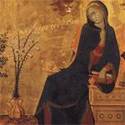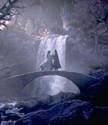
About the Catholica
Previous Posts
Toscana and the Refuges of LightThe Anti-Narnia
Ballad of the White Horse
Red and Black (at the OCP Cafe)
Dvorâk
Polyphonic Bliss
Best. Motet. Ever.
Syndication

News
Seattle CatholicCatholic Exchange
Crunchy Catholicism
Being CatholicCaelum Et Terra
Mystical Rose Herbals
Mary Gardens
Tridentine Tiramisú

St-Martin de Bréthencourt
Chartres Pilgrimage
(muchas fotos!)
Campos Photos
LMSEW Photos
Catholic Artists Today

Official Passion Site
Smallpax Guild
Nicholas Wilton Music
StudiObrien
Via Rosa Rosaries
Regina Doman
Poetry of Pavel Chichikov
Free Literature On the Web

Project Gutenberg
G.K. Chesterton
On Nothing
On Something
First and Last
Europe and the Faith
Belloc - Poetry
More Belloc Poetry
John Henry Newman
Christopher Dawson
Frederico GarcÃa Lorca
Tolkien

Romantic &
Imaginative Theology
Council of Elrond
Anke Eissmann's Art
Angels and Elves
Christianity and Middle Earth
Coulombe Essays
Ardalambion
Gwaith i Pheddain
Arthrand Board
Crazy-Go-Nuts
Homestar RunnerStrindberg & Helium
SuperPope Anime
The Onion Dome
Blogs I Like

Alle Psalite
Andrew Cusack
Angry Twins
Cacciaguida
Church of the Masses
Curt Jester
Dappled Things
Devout Life
Dignare Me Laudare Te
Erik's Rants & Recipes
Flos Carmeli
Give Tongue
Hallowed Ground
The Idyllist
Inn at the End of the World
Jade's Trick
Jelly-Pinched Theatre
Old Oligarch
Open Book
Orthonormal Basis
Sancta Sanctis
Secret Agent Man
Shrine of the Holy Whapping
Video Meliora
Vivid
The Western Confucian
Zadok the Roman
Christendom Blogs
Charlemagne's PalaceThe Christendom Commons
Meet Virginia
Destination: Order
Enchiridion
Fiddleback Fever
JulesArts
Midnight Radio
Nota Bene
¿Qué?
somewhatlost
This Red Rock
West of the Moon
Vestal Morons
Zucchero
<< # St. Blog's Parish ? >>

Archives
- April 2004
- May 2004
- June 2004
- July 2004
- August 2004
- September 2004
- October 2004
- November 2004
- December 2004
- January 2005
- February 2005
- March 2005
- April 2005
- May 2005
- June 2005
- July 2005
- August 2005
- September 2005
- October 2005
- November 2005
- December 2005
- January 2006
- February 2006
- March 2006
- April 2006
- May 2006
- June 2006
- August 2006
- September 2006
- January 2007
- February 2007
- July 2007
Kiss me, I'm Catholic.
Wednesday, April 28, 2004
JRR Tolkien: Author of the Century
Has anyone else read Tom Shippey's study of Tolkien? It's wonderfully unique as books about Tolkien go: most of them are biographies, which are bound to repeat the same familiar facts, or religious looks at Tolkien, like Joseph Pearce's Tolkien: Man and Myth and the great anthology of essays he collected. But Shippey's book examines Tolkien's work in its philological, literary AND philosophical aspects. It's also really, really fun to read. Especially the parts where he slices and dices Tolkien's irrational critics. Bwa ha ha ha ha!!! "Come, my songs,/ Let us take arms against this sea of stupidities and all the Bulmenian literati," or whatever it was Pound was saying.
Uh... anyway, here are some quotes from his book:
"The dominant literary mode of the twentieth century has been the fantastic."
"Tolkien's approach to the ideas or the devices accepted as modernist is radically different because they are on principle not literary. He used 'mythical method' not because it was an interesting method but because he believed that the myths were true. He showed his characters wandering in the wilderness and entirely mistaken in their guesses not because he wanted to shatter the 'realist illusion' of fiction, but because he thought all our views of reality were illusuions, and that everyone is in a way wandering in a 'bewilderment', lost in the star-occluding forest of Middle Earth. He experimented with language not to see what interesting effects could be produced but because he thought all forms of human language were already an experiment. One might say that he took the ideals of modernism seriously instead of playing around with them."
"However Tolkien did not just copy the 'Tally of the Dwarves', or quarry it for names. He must rather have looked at it, refused to see it, as most scholars do, as a meaningless or no longer comprehensible rigmarole, and instead asked himself a string of questions about it. What, for instance, is 'Gandálfr' doing in the list, when the second element is quite clearly álfr, 'elf', a creature in all tradition quite distinct from a dwarf? And why is 'Eikinskjaldi' there, when unlike the others it does not seem to be a possible name, but looks like a nickname, 'Oakenshield'? In Tolkien, of course, it is a nickname(...)"
"Inside The Lord of the Rings, the horn of Rohan stands for a rejection of the despair which is Sauron's chief weapon, and which hangs persistently on the edges of the story, in the barrow, in the Dead Marshes, in Fangorn Forest, in Mordor, and even in the Shire. Outside The Lord of the Rings, it stands maybe for The Lord of the Rings. If Tolkien chose a symbol for his story and his message, it would be, I think, the horn of Eorl. He would have liked to blow it in his own country, and disperse the cloud of post-war and post-faith disillusionment, depression, acquiescence, which so strangely (and twice in his lifetime) followed on victory. And perhaps he did."
These examples are chosen nearly at random. I could give others: his considerations of Bombadil and the English countryside, Tolkien's "stars and trees" motif, the contrast between Faramir and Éomer (and what it says about Gondor and Rohan), the presence in LotR of both Manichean and Boethian conceptions of evil, Tolkien's phenomenal control over the level of his diction, the significance of the birch in Smith of Wootton Major...
Anyway, it's a very insightful and many-sided book, and entirely worth your time.
|
Uh... anyway, here are some quotes from his book:
"The dominant literary mode of the twentieth century has been the fantastic."
"Tolkien's approach to the ideas or the devices accepted as modernist is radically different because they are on principle not literary. He used 'mythical method' not because it was an interesting method but because he believed that the myths were true. He showed his characters wandering in the wilderness and entirely mistaken in their guesses not because he wanted to shatter the 'realist illusion' of fiction, but because he thought all our views of reality were illusuions, and that everyone is in a way wandering in a 'bewilderment', lost in the star-occluding forest of Middle Earth. He experimented with language not to see what interesting effects could be produced but because he thought all forms of human language were already an experiment. One might say that he took the ideals of modernism seriously instead of playing around with them."
"However Tolkien did not just copy the 'Tally of the Dwarves', or quarry it for names. He must rather have looked at it, refused to see it, as most scholars do, as a meaningless or no longer comprehensible rigmarole, and instead asked himself a string of questions about it. What, for instance, is 'Gandálfr' doing in the list, when the second element is quite clearly álfr, 'elf', a creature in all tradition quite distinct from a dwarf? And why is 'Eikinskjaldi' there, when unlike the others it does not seem to be a possible name, but looks like a nickname, 'Oakenshield'? In Tolkien, of course, it is a nickname(...)"
"Inside The Lord of the Rings, the horn of Rohan stands for a rejection of the despair which is Sauron's chief weapon, and which hangs persistently on the edges of the story, in the barrow, in the Dead Marshes, in Fangorn Forest, in Mordor, and even in the Shire. Outside The Lord of the Rings, it stands maybe for The Lord of the Rings. If Tolkien chose a symbol for his story and his message, it would be, I think, the horn of Eorl. He would have liked to blow it in his own country, and disperse the cloud of post-war and post-faith disillusionment, depression, acquiescence, which so strangely (and twice in his lifetime) followed on victory. And perhaps he did."
These examples are chosen nearly at random. I could give others: his considerations of Bombadil and the English countryside, Tolkien's "stars and trees" motif, the contrast between Faramir and Éomer (and what it says about Gondor and Rohan), the presence in LotR of both Manichean and Boethian conceptions of evil, Tolkien's phenomenal control over the level of his diction, the significance of the birch in Smith of Wootton Major...
Anyway, it's a very insightful and many-sided book, and entirely worth your time.

